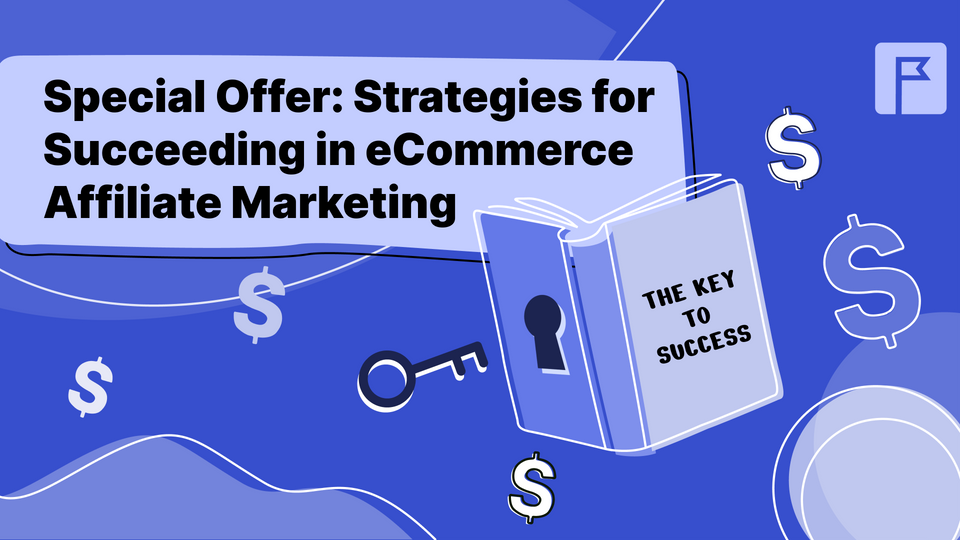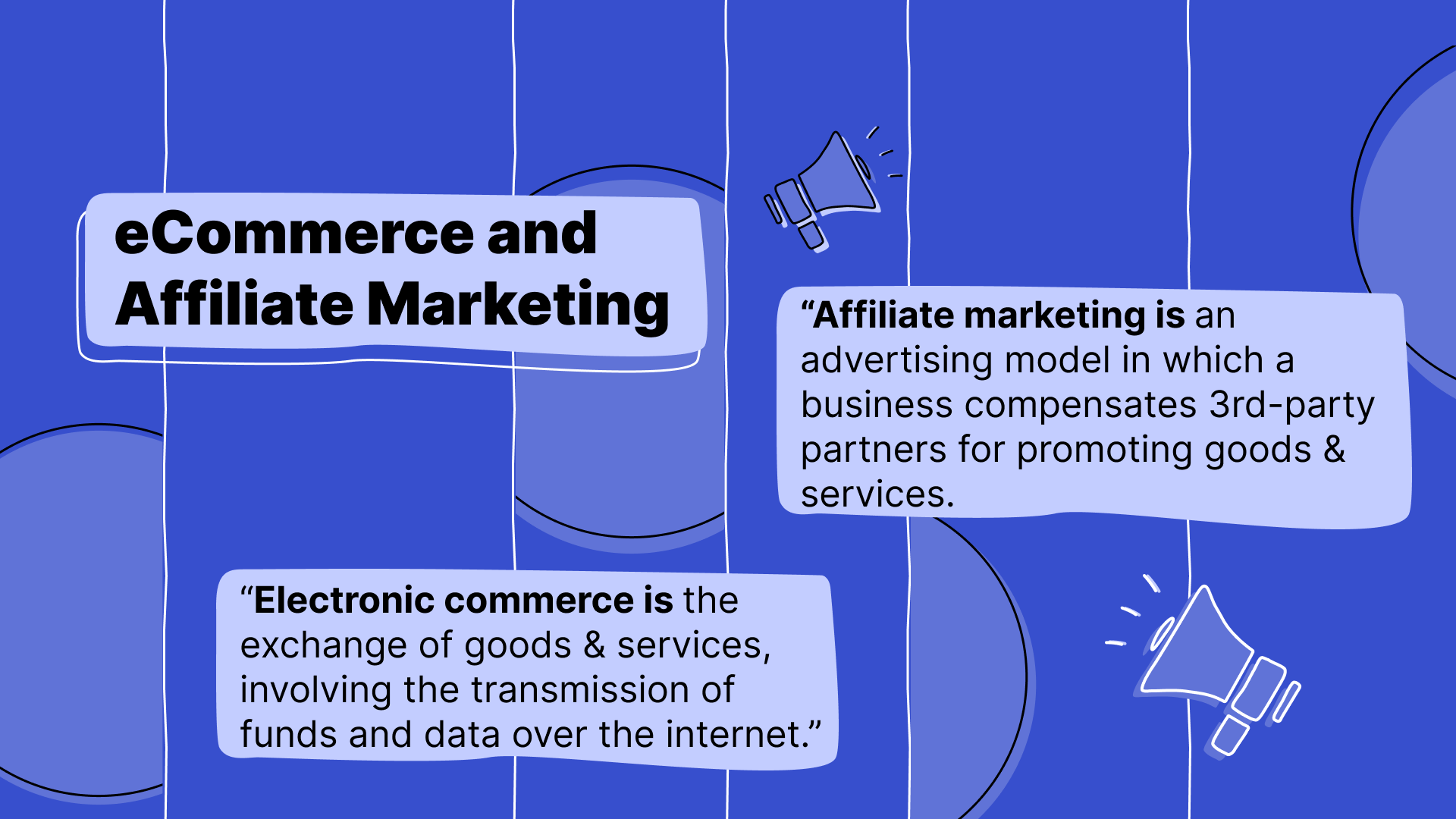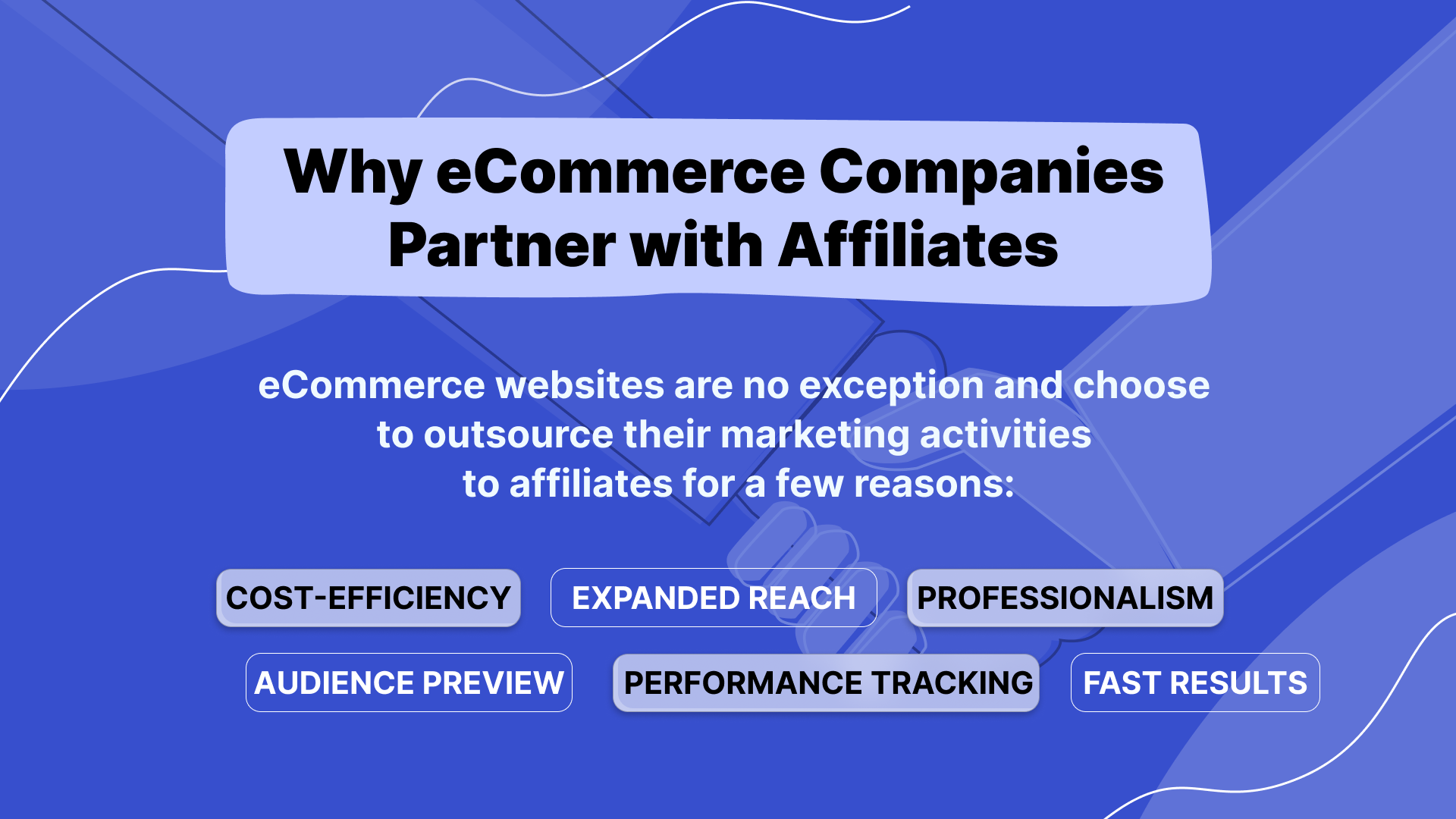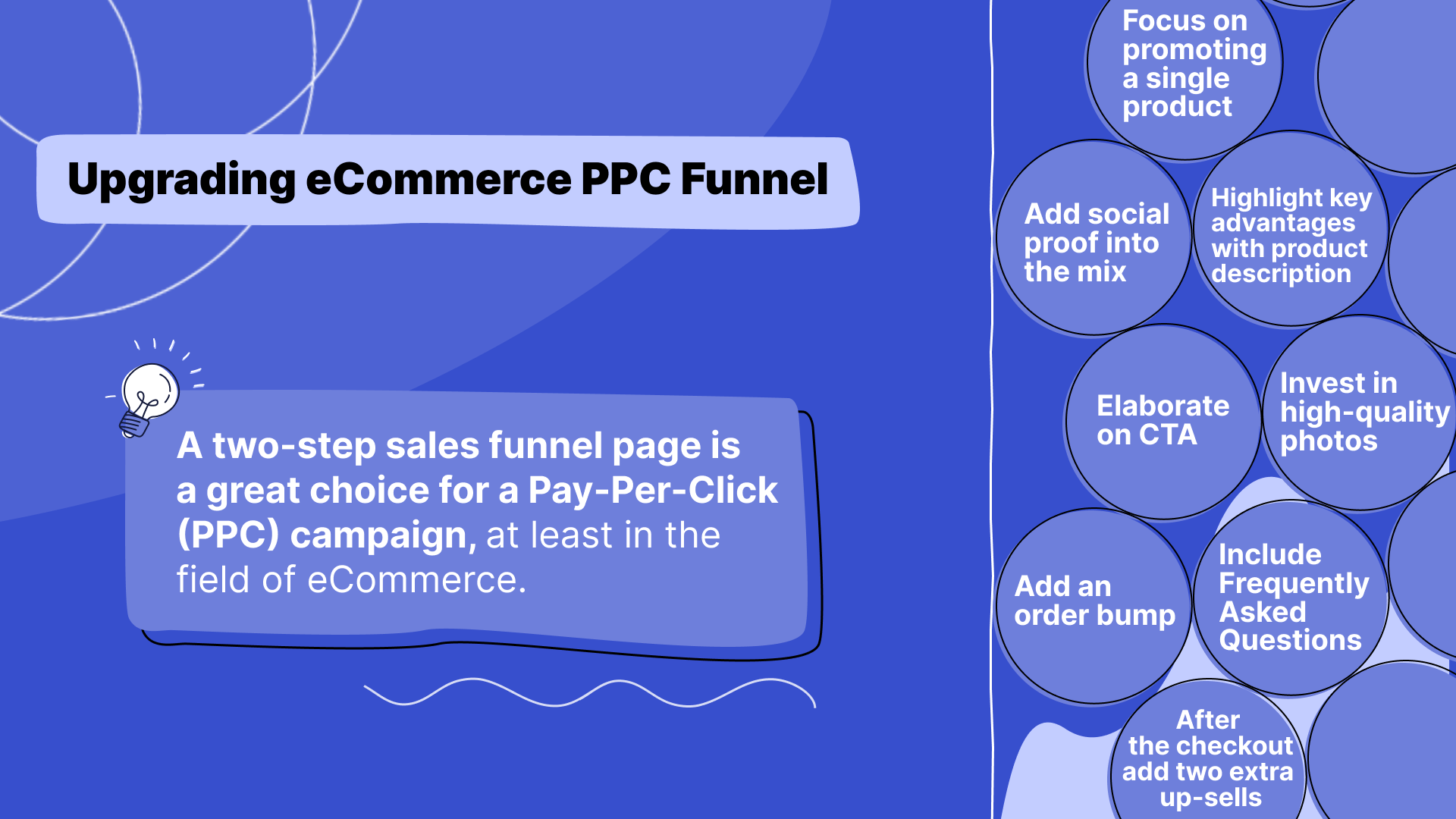Special Offer: Strategies for Succeeding in eCommerce Affiliate Marketing

Affiliate marketing drives 16% of eCommerce sales. To put it in perspective, eCommerce generated $387 billion and $703.2 billion in sales for mobiles and desktops respectively in 2022. The market is bustling and online shops like Amazon, eBay, Alibaba, Rakuten, and Walmart outsource their marketing activities to affiliates.
In this article, we’ll define eCommerce and affiliate marketing, so that you see their key differences. That’s just a start, since we’ll also provide tips on how to start with the vertical, suggest ideas for the best creatives, and explain what you should look out for when opting for an eCommerce offer.
eCommerce and Affiliate Marketing

Electronic commerce is the exchange of goods & services, involving the transmission of funds and data over the internet. Broadly speaking, eCommerce is any online selling activity. In the context of affiliate marketing, however, this vertical focuses on eShops and the products they sell.
Affiliate marketing is an advertising model in which a business compensates 3rd-party partners for promoting goods & services. Promotion is not only about sales (CPS) and can include lead generation (CPL), app installations (CPI), video views (CPV), registrations (SOI & DOI), submits (CC & PIN Submits), or any other target action (CPA). Affiliate marketing involves both online and offline promotion.
Affiliate marketing began with eCommerce: PC Flowers & Gifts emerged in 1989 and pioneered its affiliate program. Amazon hopped on the bandwagon in 1996 and popularized its affiliate program actively. Nowadays, every company and celebrity online engages in affiliate marketing and earns a commission for doing so.
Why eCommerce Companies Partner with Affiliates

eCommerce websites are no exception and choose to outsource their marketing activities to affiliates for a few reasons:
- Cost-efficiency: there are no upfront costs and the payouts are result-based
- Expanded reach: affiliates have their unique set of marketing channels
- Professionalism: affiliates specialize in marketing
- Audience preview: eCommerce business owners can get an approximate idea of how big the affiliate’s potential audience is
- Performance tracking: clicks, conversions, sales — business owners can track all the KPIs in real time
- Fast results: the affiliate has access to an established audience, which is why it’s easier to start a campaign and generate conversions
Online shops save time and costs by collaborating with affiliate marketers — their motivation is clear, but what about the affiliates?
Reasons to Work with eCommerce Vertical

The global eCommerce market is evaluated at $6.3 trillion. By 2026 the market is predicted to total over $8.1 trillion. More companies join the vertical, looking for affiliates to promote their products. And this trend creates a few advantages for marketers.
- High demand: besides more product owners joining the vertical, consumers also switch to online shopping as a more convenient way to order goods.
- Product variability: eCommerce is a huge superset, uniting Electronics, Clothing, Toys, Digital Services, Furniture, Food, and other niches.
- Evergreen vertical: users shop regularly, independent of seasons, weather, or other factors.
- Event boosted: holidays, major games, and event marketing in general fit this vertical like a glove, considering that all the wares can serve as a gift to loved ones.
- Relative simplicity: users come pre-engaged, because some goods are essential. Also, unlike mass torts, home renovation, or traveling, the vertical appeals to a broader audience and requires no special approaches or targeting settings.
- Scaling potential: thanks to the large potential audience, scaling up in eCommerce is relatively easy. This might be harder for some niches, but in general this vertical unites diverse buyers.
You might be wondering what are the drawbacks? — Competition. The largest eCommerce companies have their own rosters of affiliates, meaning the payouts are not that high. But this vertical more than compensates for it with a high conversion rate, cross-sells, and frequent promotions.
eCommerce Promotional Specifics
Generally, eCommerce offers pay out on the Cost-Per-Sale (CPS) model. But there might be other CPA options, like Cash-On-Delivery (COD), Cost-Per-Order (CPO), Credit Card (CC) Submit, or Cost-Per-Engagement (CPE).
Black Friday and especially Cyber Monday are designed for eCommerce. However, the holidays and other key dates are many: Apple presentations, Valentine’s Day, Christmas, change of seasons — even the weather going south can be used to boost eCommerce sales.
For an eCommerce product to sell out, keep in mind and apply the following best practices:
- Demonstrate via visuals: users on a shopping spree don’t have time to read your ads, convey your ideas visually
- Pictures can be dynamic: you don’t have to make a video ad to show off all the product features, simply squeeze in four pictures instead of one in your creative
- 30 seconds to mars sell: when using videos, make sure they are short, as potential buyers cannot afford spending too much time on your ad
- Customer reviews + HQ images: amplify social proof with eye-pleasing visuals to leave no chance for second thoughts when buying
- Capitalize on UGC: search social media for the User-Generated Content, related to the product you’re promoting or go further by purchasing it for your friends and asking for reviews — eCommerce goods tend to be affordable
Upgrading eCommerce PPC Funnel

A typical sales funnel for eCommerce looks like this: ad → offer page → add to cart. Most of eCommerce websites operate this way and… it’s just a heap of elements, not an integral funnel.
A two-step sales funnel page is a great choice for a Pay-Per-Click (PPC) campaign, at least in the field of eCommerce.
Focus on promoting a single product, so make sure your ad redirects to the corresponding landing page. Continue the original story of your ad and keep on revealing more details about the same product.
Add social proof into the mix, like testimonials, star ratings, and/or video reviews, including unboxing videos.
Invest in high-quality photos, showcasing your product from every angle, including in the box. Consider making a dedicated video or use a compilation of pictures to show your product in motion and 360-degree view.
Highlight key advantages with product description. Write a text that you want to read as a customer yourself. This is usually achieved when the text solves a certain problem or two.
Elaborate on Call-To-Action. You need a big and exact CTA, either in the review section, after the product description, or anywhere else you deem appropriate.
Include Frequently Asked Questions. F.A.Q. dispels any doubts your prospects might have quickly. To learn which questions to answer, you can call the people who quit directly and ask frankly about the reasons they left for the sake of your improvement. Or you can survey them, using a PopUp exit window.
Add an order bump. The spot between adding a product to the cart and going to checkout is the best moment for an up-sell. Offer something that complements your original product to increase your average order value and revenue by 4–6%. For the bump to work, two conditions are to be met: a good bundle and a good deal.
After the checkout add two extra up-sells, which allow obtaining results from the original product either faster or easier. The second one can follow the same logic or offer some kind of subscription. Two finishing up-sells help to generate 3–10% more revenue.
eCommerce Offers
Most of the eCommerce offers work on a CPA basis and its siblings, but some RevShare offers pop up sporadically. CPA payouts can range from a few cents to a couple of hundred dollars.
Keep in mind that high payouts are there for a reason: they either compensate for low conversion rates or serve as bait for affiliates. Make sure to read forums and ask questions there about new affiliate networks. Leverage social media channels to get more info and make informed decisions about whom to partner with.
Conclusion
eCommerce is a promising niche for affiliates of all calibers. Newcomers can take advantage of its relative simplicity and practice their skills. Seasoned marketers can add a few eCommerce offers to their campaign portfolio as a way to diversify their investments.
Choose your offer wisely and focus on a single product when creating a funnel. Make sure to add social proof to it and use up-sells wisely, when the user’s engagement is at its peak. Remember, sometimes it takes more than a picture to showcase a product from every angle. While a video ad is a solid pick, it should also be brief, so the user does not get bored.
Whichever offer you have at hand, make sure to contact the HilltopAds managers for assistance. We’ll pick the best traffic sources for your offer and optimize them to maximize your profit generation.
